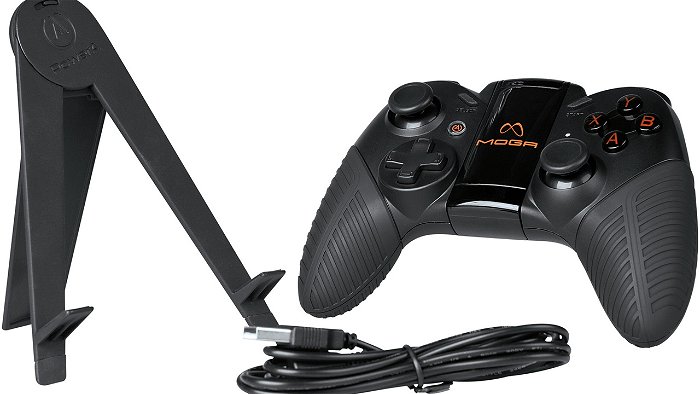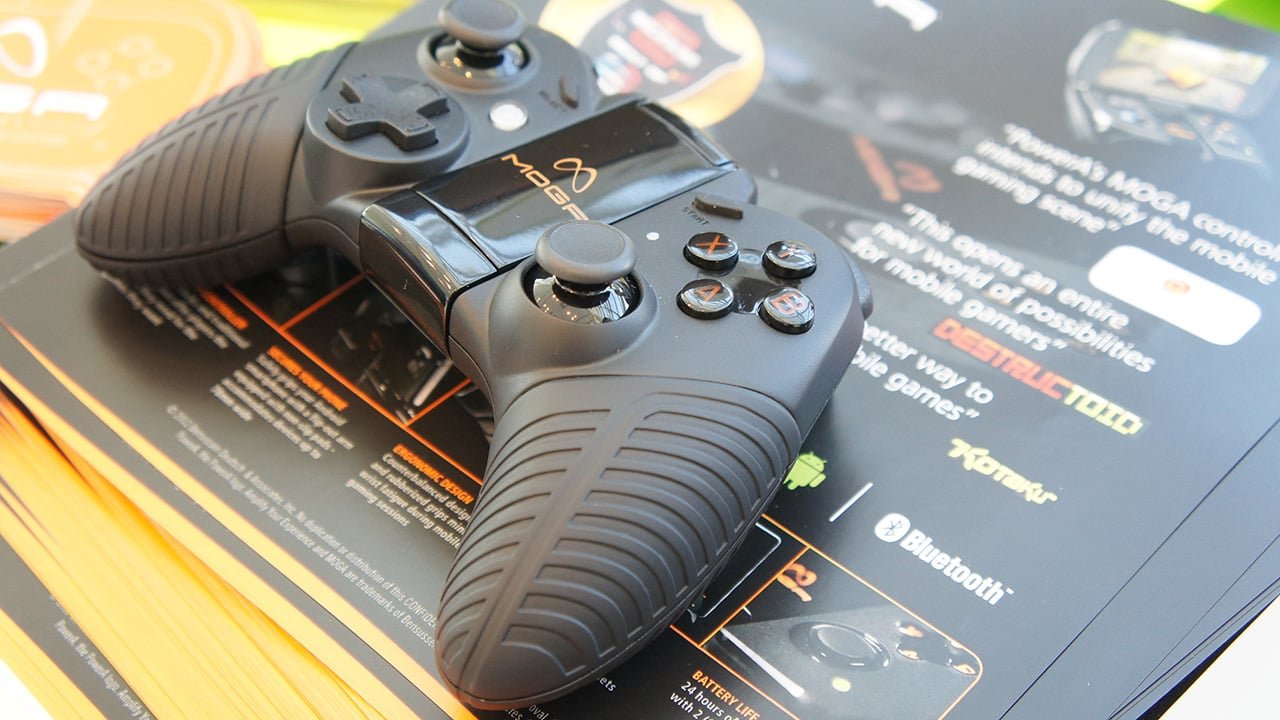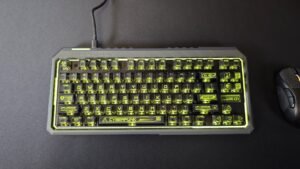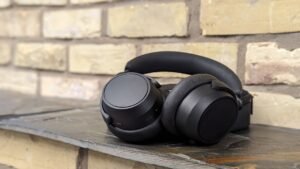There’s an argument that says if you’re going to play hardcore games, you’re probably going to want to stick to dedicated hardware. After all, with tablets and smart phones, the entire interface is based around touch interaction, so driving games, action games and shooters of the first and third variety aren’t going to have the tight responsiveness gamers are accustomed to with a controller. This is an argument that the MOGA controller, created by PowerA obviously hasn’t heard.
The Mobile Controller
The MOGA Pro (and its relatives in the MOGA controller line) is a Bluetooth enabled controller designed to pair with Android smartphones and/or tablets to let MOGA compatible games be played with a traditional controller. The model sent for review, the Pro Controller, retails for about $50 on average, and comes with an accessory stand for those that want to use the controller with a tablet. It’s configured similarly to the Xbox 360 controller with offset analog sticks.
The actual build quality of the Pro Controller is adequate. In many ways, it has the same feel as third party controllers for Xbox 360 or PS3. It weighs 6.7 ounces, which makes it slightly heavier than a DualShock 3 that weighs only 6.3. However, both the 360 and PS3 controllers feel more solid, particularly in the grips, where the MOGA Pro feels a bit lighter and hollow, contributing to that cheaper feel of the build. It comes with a swivel arm built into the centre that swings up to act as a cradle for phones up to 3.2 inches in width. Compatibility is required; with users downloading an app that then hunts for and pairs with the MOGA Pro via Bluetooth. Once the connection is established, players can use the controller as normal, and it’s here where many of the pros and cons of the unit really stand out.
On one hand, this is a full sized controller, with no compromises made to the interface, so players benefit from having access to dedicated start, select buttons, face buttons, four shoulder buttons, two analog sticks and a D-pad. On the other hand, it’s a full sized controller, which means that this is already making some compromises in convenience and portability. It’s an extra peripheral that needs to be carried around in either some big pockets, or a tote bag of some kind and it definitely plays better with phones. The swivel arm and cradle will comfortably fit a phone, and although it looks a bit odd playing a game where the controller is as large as or larger than the display itself, it’s still a viable solution on a plane, bus, or some other commute. It gets awkward with a tablet where the choices are either playing with the tablet on your lap, or somehow finding space to place the stand to mount the tablet on, such as the fold out table on a plane. The best place to use the MOGA Pro with a tablet is at home, but then this defeats the purpose of mobile gaming entirely.
In many ways, it seems like if players really want the comfort of using full controllers with mobile gaming, it might simply be better to get a dedicated device for this, such as a 3DS or a Vita. In all cases, this requires bringing something extra along in order to comfortably play a game in the traditional hardcore way, but both the 3DS and Vita have the virtue of slimmer and less bulky. The MOGA Pro is just not easy to carry around and takes up an awkward amount of space.

On the other hand, there’s no question that for what it’s supposed to do, it works well. Third person shooters like Max Payne and Shadowgun ran just fine with the MOGA and show obvious benefits. These games are best played with controllers, and feel much more natural and playable with proper sticks and buttons. Unfortunately, the list of games currently compatible with MOGA is far from comprehensive, so while some of the bigger companies like Rockstar have made their Max Payne and GTA games compatible, other companies like Electronic Arts have yet to bring official support of the MOGA to their titles like Dead Space or Need for Speed, although, as with most things on the Android platform, it’s a sure bet there are some unofficial solutions floating around.
In the end, the MOGA Pro is an awkward solution to the problem of hardcore portable gaming, but it’s a solution nonetheless. It’s difficult to imagine who the audience is for this peripheral. Casuals will find it to be inconvenient, cumbersome overkill for their gaming needs (and Candy Crush doesn’t need or support it anyway), and the hardcore will likely stick to their consoles, or use a 3DS, Vita or gaming laptop. However, for that small group of hardcore gamers that insists on continuing their hardcore gaming on their Android phone or tablet, this works, albeit clumsily.





